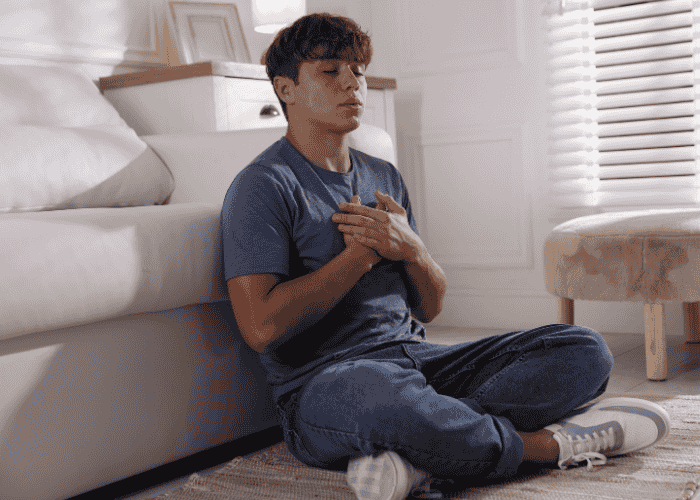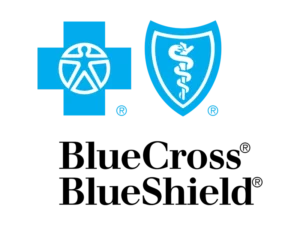Mindfulness-Based Cognitive Therapy: Mindfulness Techniques for Teens

Being a teen isn’t always easy. Between the demands to keep up in school, comparison pressures on social media, changing friendships, and family expectations, many teens find themselves in a constant spiral of stress and self-doubt.
It’s no wonder that with all this stress, the rates of anxiety and depression in teens have risen in recent years.1 For many parents, watching their child struggle with worries they can’t seem to “fix” can be heartbreaking.
This is where mindfulness-based cognitive therapy can make a difference. Teen mental health mindfulness programs give teens practical ways to handle stress, calm their anxiety, and respond to challenges without getting overwhelmed by them.
If you think that your teen could benefit from mindfulness-based cognitive therapy, a mental health professional can discuss its suitability for their needs. This page also discusses the mental health benefits of mindfulness techniques for teens, as it explores:
- What mindfulness-based cognitive therapy is
- MBCT coping skills for teenagers and how to use them
- The benefits of MBCT for mental health
- Answers to commonly asked questions about MBCT for teens

What Is Mindfulness-Based Cognitive Therapy?
Mindfulness-based cognitive therapy (MBCT) is a type of therapy that combines elements of mindfulness practices with cognitive behavioral therapy.2 The idea of MBCT is to bring awareness to thoughts and feelings without judgment and learn to respond in calmer and healthier ways.
The following are brief descriptions of the two elements involved in professional MBCT therapy for adolescents: CBT and mindfulness.
Cognitive behavioral therapy (CBT):
CBT is all about noticing patterns in our thoughts and learning how those patterns shape our feelings and behaviors.3 For example, if a teen starts thinking I always mess things up, this thought can quickly spiral into feelings of sadness and anxiety. CBT helps to challenge and reshape these kinds of thoughts into something more balanced and realistic.
Mindfulness:
Mindfulness, on the other hand, is about paying attention to the present moment with curiosity and without judgment. For teens, this might look like focusing on breathing before a test, noticing tension in their shoulders when scrolling social media, or learning to pause before reacting to a situation. There are many mindfulness techniques teens can use for different situations, which we discuss shortly.
These sections describe how CBT and mindfulness work in isolation for targeting mental health. However, when you combine cognitive behavioral therapy with mindfulness for adolescents, it’s less about changing or reshaping thoughts and more about acknowledging them without judgment. This way, instead of getting lost in anxious thoughts or negative self-talk, they can learn to recognize what’s happening in their mind and body and choose healthier ways to respond.
Together, each of these potential causes of SSD highlights how it could result from a mix of factors. However, recognizing these influences can help families respond with greater understanding and compassion.
Mindfulness Techniques For Teens To Try
Mindfulness can sometimes sound intimidating, boring, or abstract – especially to teens. But the techniques are usually short, easy to remember, and something teens can use in everyday life.
Here are some popular teen therapy interventions with MBCT:
The 5-4-3-2-1 Grounding Technique
The 5-4-3-2-1 technique can be especially helpful during panic attacks or when thoughts feel out of control. It works by disrupting or distracting the mind when it’s in the middle of spiraling.4 A teen can do it by naming…
- Five things they see
- Four things they feel
- Three things they hear
- Two things they smell
- One thing they taste
By focusing on the things around them, they can ground themselves in the present moment. Parents sometimes notice this helps their teen stop spiraling before a test or calm down after an argument at home. The great thing is that they can use this technique anywhere, at any time.
Mindful Breathing
Mindful breathing is about focusing attention on the breath as a way to prevent becoming overwhelmed by thoughts and feelings. It works by signaling the nervous system to slow down, reducing stress and anxiety.5 One of the most common mindful breathing techniques is box breathing. Here’s how the box breathing technique typically goes:
- Breathe in slowly through the nose for a count of four
- Hold the inhale for a count of four
- Breathe out through the mouth for a count of four
- Hold for a count of four and repeat
For teens, sitting quietly and just focusing on breathing can often be difficult. To make it a bit more engaging, teens can use a guided breathing meditation or pick a favorite song and slowly breathe in and out to the beat. Of course, if they choose to practice the technique to a song, a slow and relaxing one works best.
Body Scan Meditation
A body scan is a mindfulness practice that involves slowly paying attention to different parts of the body one at a time. This technique can not only redirect attention away from overwhelming thoughts and emotions, but it may also help teens become more attuned to the physical sensations in their bodies. In fact, evidence suggests that body scans can give us a better understanding of how and where we carry stress in our bodies. Therefore, it’s a skill that could help us relax and even improve sleep.6
To practice a body scan, a teen can start by focusing on the top of their head. Then, they slowly move downward, noticing each part of the body and releasing tension as they go. For example, they might notice they’re clenching their jaw, so they allow themselves to release tension by relaxing the jaw.
STOP Technique
The STOP technique is an easy four-step practice that can help teens interrupt automatic reactions. Therefore, it could help them move from acting impulsively to more thoughtful responses. It does so by giving teens a quick script for stressful moments. The following are the steps according to the acronym:
- Stop what you’re doing
- Take a breath
- Observe what’s happening in your mind and body (for example, Am I angry, nervous, or embarrassed?)
- Proceed with intention rather than reacting
For instance, instead of firing off a text in anger or snapping back at a parent, this pause can help teens choose a calmer response. Over time, this could build emotional control and confidence in handling tough situations. For this reason, this technique can be a great part of teen therapy for emotional regulation with MBCT.
Mindful Journaling
Journaling for mindfulness isn’t about keeping a perfect diary – it’s about letting thoughts spill onto the page without editing or judgment. For instance, teens could write for five minutes about whatever’s on their mind, then set the notebook aside. This process helps them notice patterns in their thinking (like constant self-criticism or worry) and see these thoughts as separate from who they are. Parents often appreciate this tool because it encourages self-expression in a private, safe way.
The key with these techniques is consistency, not perfection. Even a few minutes of practice each day can help teens feel calmer, more focused, and better equipped to handle life’s ups and downs. Plus, when included as part of MBCT treatment plans for teens, these simple exercises become powerful tools that support emotional growth and long-term resilience.
MBCT Benefits for Youth Mental Health
When a teen starts using MBCT tools regularly, the changes can be noticeable, not just for them, but for the whole family. These benefits often build gradually, as small practices become daily habits. Over time, MBCT gives adolescents the confidence that they have the skills to handle challenges.
The following are the benefits of MBCT for teens:
Reduced Anxiety and Depression
One of the most well-documented benefits of MBCT is its ability to ease symptoms of anxiety and depression.7 In fact, research highlights MBCT as an effective approach to anxiety and depression therapy for teens – potentially even reducing thoughts of suicide.8
By breaking the cycle of negative thoughts and teaching mindfulness as a buffer, adolescents often feel less weighed down by constant worry or low mood.
Improved Focus and Academic Performance
Mindfulness can strengthen attention.9 For teens, this may mean being less distracted during class, feeling more prepared for tests, or simply being able to finish homework without spiraling into stress. Additionally, parents might notice that their teen seems calmer and more motivated after practicing mindfulness regularly.
Stronger Emotional Regulation
Adolescence is often full of big emotions. MBCT gives teens the tools to ride these emotional waves without being swept away by them. Instead of reacting impulsively, they learn how to pause, breathe, and respond in ways that feel more thoughtful and balanced.10 This is because MBCT is similar in its structure to mindfulness-based stress reduction for teens, helping them handle everyday challenges with greater resilience.
Resilience Against Peer Pressure and Social Comparison
With the pressure of social media and peer dynamics, it can be easy for teens to feel “not enough.” MBCT helps them notice such feelings without letting them define their self-worth. This resilience can be protective against negative peer pressure and the constant comparisons that social platforms encourage.11

Mission Prep: Supporting Teens Through Mindfulness-Based Therapy
Living with anxiety, depression, or overwhelming stress as a teenager can feel like carrying a heavy weight every day. For families, this burden can be painful to watch and often leaves parents feeling unsure of how to help. At Mission Prep, we believe no teen should have to face these challenges alone.
Our programs are designed specifically for adolescents and their families, offering multiple levels of care depending on each teen’s needs. This includes residential treatment, outpatient therapy, and intensive outpatient (IOP) programs, all created to provide the right balance of structure, support, and flexibility.
Mission Prep also weaves mindfulness into a broader approach that helps teens strengthen resilience, learn new coping skills, and find healthier ways to connect with themselves and others. Whether your child is dealing with school stress, social pressures, or the weight of anxiety and depression, our goal is to provide a safe, supportive space where growth is possible.
If your teen is struggling and you’re ready to explore the next step, Mission Prep is here. Contact us today, and together, we can help your child build the skills they need to feel calmer, more confident, and ready to face life’s challenges with strength.
FAQs About MBCT for Teens
While we hope that this guide helped clarify mindfulness-based cognitive therapy for teens, you may still have some questions about how it works. For this reason, we’ve provided some responses to FAQs about MBCT for teens.
What Makes MBCT Different From Other Types of Therapy?
Mindfulness-based cognitive therapy (MBCT) combines two powerful approaches: mindfulness practices and cognitive behavioral therapy. While CBT focuses on identifying and reshaping unhelpful thoughts, MBCT adds the practice of being present and observing those thoughts without judgment. For teens, this combination can be especially helpful in breaking cycles of anxiety, stress, or negative self-talk.
How Long Does It Take to See Results From MBCT?
Every teen is different, but many start noticing the benefits of MBCT after just a few weeks of consistent practice. Small changes, like feeling calmer before a test or less reactive during family conflicts, often happen early on. With time, these skills can become habits that support long-term resilience and emotional health.
Can MBCT Help With Everyday Stress, Like Schoolwork and Social Pressure?
Absolutely. MBCT isn’t just for serious mental health conditions – it’s also a powerful tool for handling daily stressors. Teens can use mindfulness techniques before exams, during sports competitions, or even when dealing with social media pressures. These strategies help them pause, reset, and respond more thoughtfully.
How Can Mindfulness Help the Teenage Brain?
Adolescence is a critical time for brain development. Mindfulness strengthens areas of the brain involved in focus, emotion regulation, and decision-making. For teens, this means they can learn to better manage stress, reduce impulsive reactions, and build healthier coping strategies. Over time, mindfulness can actually help “rewire” the brain in ways that support long-term mental health.
Does Mission Prep Offer MBCT as Part of Its Programs?
Yes. Mission Prep integrates MBCT into our treatment options, which include residential, outpatient, and intensive outpatient (IOP) programs. Along with MBCT, our team also uses therapies like CBT, EMDR, and family support programs to create a comprehensive plan that fits each teen’s unique needs.
References
- Anderson, T. L., Valiauga, R., Tallo, C., Hong, C. B., Manoranjithan, S., Domingo, C., Paudel, M., Untaroiu, A., Barr, S., & Goldhaber, K. (2024). Contributing factors to the rise in adolescent anxiety and associated mental health Disorders: A narrative review of current literature. Journal of Child and Adolescent Psychiatric Nursing, 38(1). https://doi.org/10.1111/jcap.70009
- Sipe, W. E. B., & Eisendrath, S. J. (2012). Mindfulness-Based Cognitive therapy: Theory and practice. The Canadian Journal of Psychiatry, 57(2), 63–69. https://doi.org/10.1177/070674371205700202
- Institute for Quality and Efficiency in Health Care (IQWiG). (2022, June 2). In brief: Cognitive behavioral therapy (CBT). InformedHealth.org – NCBI Bookshelf. https://www.ncbi.nlm.nih.gov/books/NBK279297/
- Gupta, S. (2024, April 29). Feeling anxious? Try the 5-4-3-2-1 grounding technique. Verywell Mind. https://www.verywellmind.com/5-4-3-2-1-grounding-technique-8639390
- Bentley, T. G. K., D’Andrea-Penna, G., Rakic, M., Arce, N., LaFaille, M., Berman, R., Cooley, K., & Sprimont, P. (2023). Breathing Practices for Stress and Anxiety Reduction: Conceptual Framework of Implementation Guidelines based on a systematic review of the published literature. Brain Sciences, 13(12), 1612. https://doi.org/10.3390/brainsci13121612
- Rusch, H. L., Rosario, M., Levison, L. M., Olivera, A., Livingston, W. S., Wu, T., & Gill, J. M. (2018). The effect of mindfulness meditation on sleep quality: a systematic review and meta‐analysis of randomized controlled trials. Annals of the New York Academy of Sciences, 1445(1), 5–16. https://doi.org/10.1111/nyas.13996
- Kocovski, N., & MacKenzie, M. (2016b). Mindfulness-based cognitive therapy for depression: trends and developments. Psychology Research and Behavior Management, 125. https://doi.org/10.2147/prbm.s63949
- Zhu, S., Wang, P., Liu, Q., Zhao, Z., Meng, J., & Hu, J. (2025). The effect of mindfulness-based cognitive therapy on suicidal thoughts and interleukin-6 levels in depressed adolescents. Journal of Affective Disorders, 386, 119466. https://doi.org/10.1016/j.jad.2025.119466
- Jha, A. P. (2024, February 20). Mindfulness can improve your attention and health. Scientific American. https://www.scientificamerican.com/article/mindfulness-can-improve-your-attention-health/
- Sibinga, E., Copeland-Linder, N., Webb, L., Shields, A., & Perry-Parrish, C. (2016). Improving self-regulation in adolescents: current evidence for the role of mindfulness-based cognitive therapy. Adolescent Health Medicine and Therapeutics, Volume 7, 101–108. https://doi.org/10.2147/ahmt.s65820
- Liu, Q., Jiang, M., Li, S., & Yang, Y. (2021). Social support, resilience, and self-esteem protect against common mental health problems in early adolescence. Medicine, 100(4), e24334. https://doi.org/10.1097/md.0000000000024334













